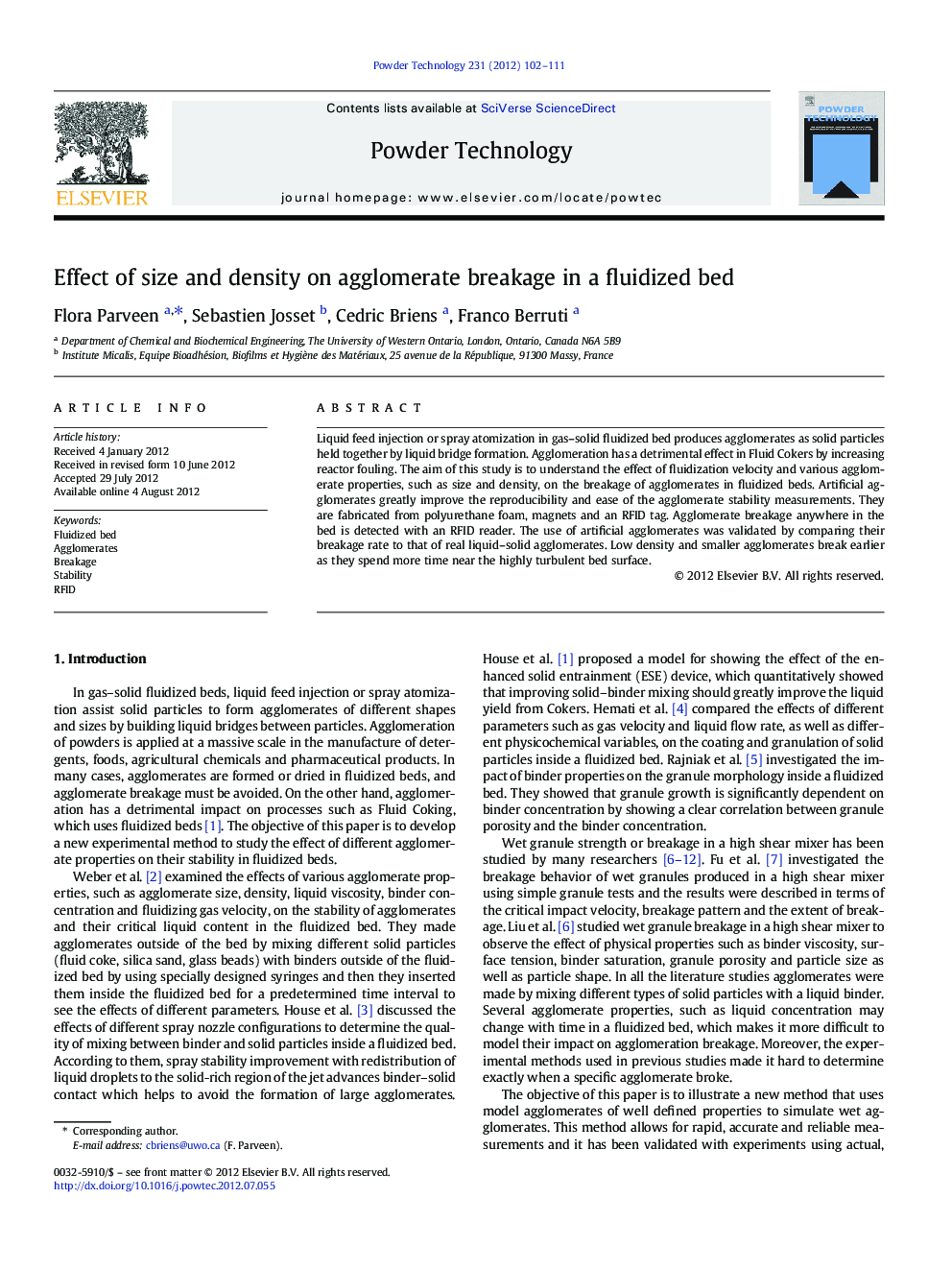| Article ID | Journal | Published Year | Pages | File Type |
|---|---|---|---|---|
| 236742 | Powder Technology | 2012 | 10 Pages |
Liquid feed injection or spray atomization in gas–solid fluidized bed produces agglomerates as solid particles held together by liquid bridge formation. Agglomeration has a detrimental effect in Fluid Cokers by increasing reactor fouling. The aim of this study is to understand the effect of fluidization velocity and various agglomerate properties, such as size and density, on the breakage of agglomerates in fluidized beds. Artificial agglomerates greatly improve the reproducibility and ease of the agglomerate stability measurements. They are fabricated from polyurethane foam, magnets and an RFID tag. Agglomerate breakage anywhere in the bed is detected with an RFID reader. The use of artificial agglomerates was validated by comparing their breakage rate to that of real liquid–solid agglomerates. Low density and smaller agglomerates break earlier as they spend more time near the highly turbulent bed surface.
Graphical abstractEffect of fluidization velocity and agglomerate size on agglomerate breakage probability is shown. Agglomerates have a density of 820 kg/m3. C has a height of 3.3 cm and a diameter of 2 cm while D has a height of 2.5 cm and a diameter of 1.4 cm.Figure optionsDownload full-size imageDownload as PowerPoint slideHighlights► New method measures agglomerate breakage in fluidized beds. ► Higher fluidization velocities promote agglomerate breakage. ► Lower agglomerate densities promote agglomerate breakage. ► Smaller agglomerates break more quickly.
